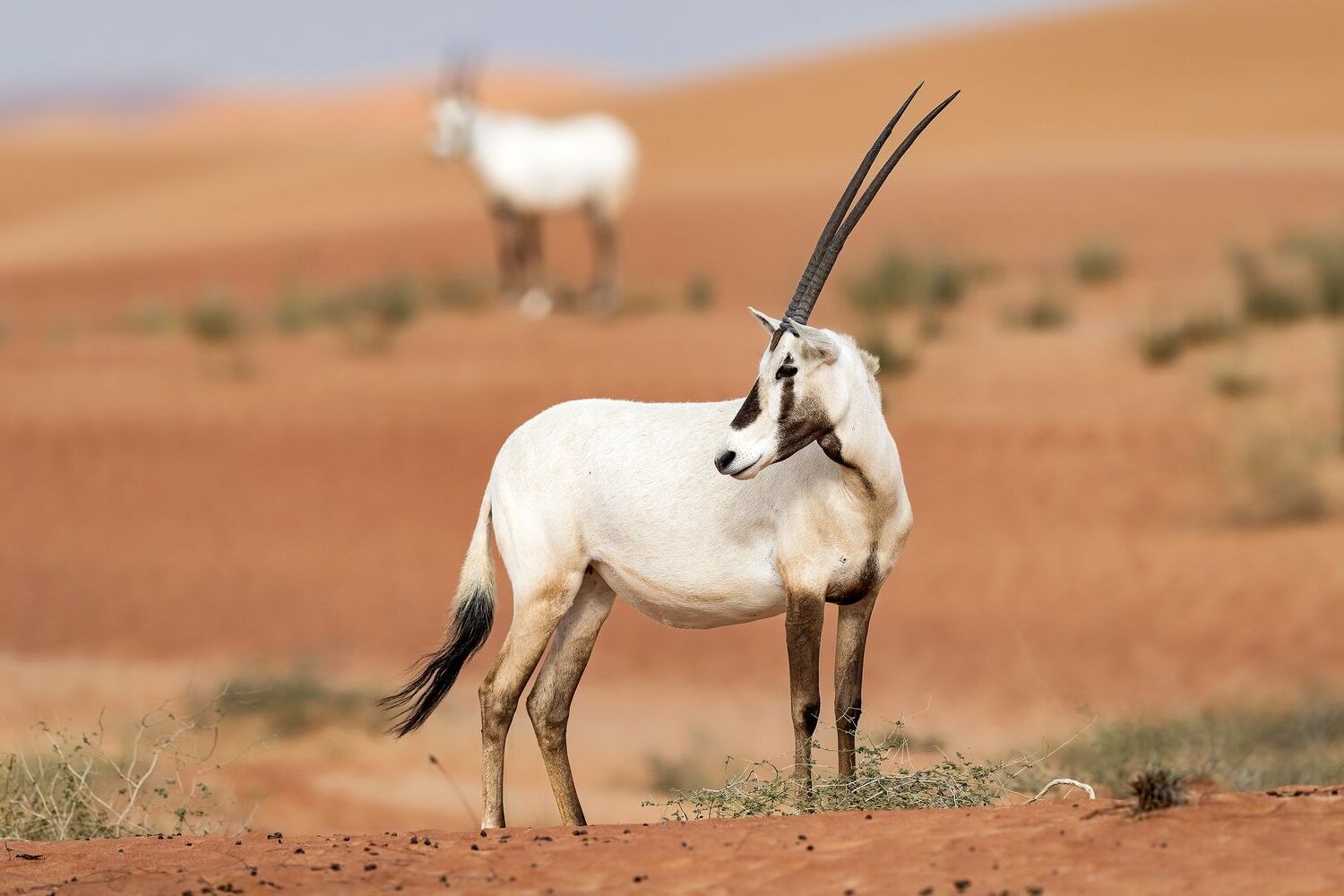
How do animals survive in the harsh desert environment? Deserts are some of the most extreme places on Earth, with scorching temperatures, scarce water, and relentless sunlight. Yet, many animals have developed incredible adaptations to not just survive but thrive in these arid landscapes. From the thorny devil's ability to drink through its skin to the fennec fox's oversized ears that act as radiators, these creatures have evolved unique strategies to conserve water, regulate body temperature, and avoid predators. Whether it's the camel's fat-storing humps or the kangaroo rat's lifelong water independence, these adaptations showcase the remarkable resilience of desert wildlife.
Key Takeaways:
- Desert animals have amazing water conservation strategies, like drinking through their skin and obtaining moisture from prey, to survive in arid environments.
- Unique adaptations in desert animals, such as using spit baths to cool down and hibernating in a water-soluble mucus sac, help them thrive in extreme temperatures and avoid predators.
Water Conservation Strategies
Desert animals have evolved incredible ways to conserve water, ensuring their survival in arid environments. These adaptations are often unique and fascinating.
-
The Thorny Devil Drinks with Its Skin
The thorny devil, a small lizard from Australia, absorbs water through its skin. Tiny, hair-like structures on its skin increase surface area, making water absorption efficient. -
The African Pyxie Frog Can Hibernate in a Water-Soluble Mucus Sac for Years
This frog creates a water-soluble mucus sac to hibernate, conserving water and surviving in dry conditions for extended periods. -
The Sand Grouse Can Carry Water In Its Feathers
The sand grouse, a bird from North Africa, carries water in its feathers. This adaptation allows it to transport water across the desert, crucial for survival. -
The Dorcas Gazelle Never Has to Drink Water or Urinate
The dorcas gazelle has highly efficient kidneys, allowing it to conserve water. It can go without drinking or urinating for long periods. -
The Fogstand Beetle Drinks Dew Drops
This beetle uses its long proboscis to drink dew that collects on plants, providing a vital water source. -
Desert Animals Conserve Water by Producing Concentrated Urine
Many desert animals produce very concentrated urine, reducing water loss and helping them survive in arid environments. -
Desert Animals Obtain Moisture from Their Prey
Insectivores and carnivores in the desert often get moisture from their prey, an essential adaptation for survival. -
Desert Succulents Accumulate Water in Their Fleshy Tissue
Succulents store water in their tissues, providing a moisture source for animals that feed on them. -
Desert Toads Have Rough, Bumpy Skin for Water Absorption
The rough, bumpy skin of desert toads increases surface area for water absorption, helping them conserve water.
Temperature Regulation
Surviving extreme temperatures is another challenge for desert animals. They have developed unique ways to regulate their body temperature.
-
Big Ears Act Like Radiators
The fennec fox's large ears are filled with blood vessels, helping dissipate excess body heat and keeping the fox cool. -
The Cape Ground Squirrel Takes Shade Everywhere It Goes
This squirrel uses its bushy tail as a parasol, providing shade and protecting itself from the sun. -
Kangaroos Cool Themselves With Spit Baths
Kangaroos take spit baths to cool down. They collect saliva in their mouths and spit it out, creating a cooling effect. -
The Desert Cottontail Has Fantastic Ears for Cooling
The desert cottontail's long ears are filled with blood vessels, helping cool the animal down. -
The Desert Bighorn Sheep Can Safely Raise Its Body Temperature
Unlike humans, the desert bighorn sheep can raise its body temperature a few degrees to tolerate the heat better.
Movement and Locomotion
Efficient movement is crucial for desert animals to find food, water, and escape predators. Their adaptations are often unique and specialized.
-
“Sidewinding” May Look Funny, But It’s Actually Highly Efficient
The sidewinder rattlesnake moves in a unique way, allowing it to traverse sand dunes without sinking. -
The Chuckwalla Is the Puffer Fish of the Desert
The chuckwalla lizard can puff up its body to deter predators, similar to a puffer fish. -
Kangaroo Rats Have Large Hind Feet for Jumping
These rodents have large hind feet that enable them to leap far distances in search of food. -
Jerboas Have Long Legs for Jumping
Jerboas can leap up to 10 feet in one bound, helping them escape predators. -
The Blind Skink Stays Under the Sand
This lizard stays under the sand to avoid predators and maintain a stable body temperature.
Predator Avoidance
Avoiding predators is a constant challenge in the desert. Animals have developed various strategies to stay safe.
-
Meerkats Are Always Game-Ready
Meerkats are highly alert and vigilant, always ready to defend themselves. -
The Addax Antelope Changes Color With the Seasons
The addax antelope changes its color with the seasons, helping it blend in with its surroundings. -
The Common Kingsnake Is Immune to Rattlesnake Venom
This snake is immune to rattlesnake venom, allowing it to prey on rattlesnakes without fear. -
Coyotes Have Flame-Colored Fur for Camouflage
Coyotes' flame-colored fur helps them blend into the desert terrain, hiding from predators and sneaking up on prey. -
Gila Monsters Have Specialized Scales for Camouflage
The Gila monster's scales and coloration provide camouflage, helping it blend into its rocky environment. -
Desert Hedgehogs Curl into a Ball for Defense
These hedgehogs curl into a tight ball when threatened, protecting their soft belly with spines.
Unique Survival Strategies
Desert animals have developed some truly unique survival strategies, showcasing their incredible adaptability.
-
The Camel Is a Living Desert Adaptation
Camels store fat in their humps, which can be used as food and water. They also have thick hairs and wide feet for desert survival. -
Camels Aren’t the Only Animals That Store Fat for Desert Survival
The Gila monster stores fat in its tail, allowing it to survive for months without food. -
Can’t Find Food? Toughen Up
The peccary has a tough mouth and specialized digestive system, enabling it to eat prickly pear cactus pads without harm. -
Scorpions Can Slow Their Metabolic Rate, Allowing Them to “Hibernate” While Awake
Scorpions can slow their metabolic rate, conserving energy and surviving in environments with limited food. -
The Roadrunner “Cries Out” Excess Salt
The roadrunner eliminates excess salt by "crying out," maintaining proper bodily functions in the desert. -
Delicate Skin Keeps the African Spiny Mouse Protected
The African spiny mouse's delicate skin prevents water loss and protects it from predators. -
Pronghorns Have Long, Sleek Limbs for Speed
Pronghorns have long limbs that help them bound through dry scrublands at incredible speeds. -
Pronghorns Have Specialized Nostrils for Water Conservation
Pronghorns' specialized nostrils help them conserve water while breathing. -
Pronghorns Have a Unique Digestive System
Their four-chambered digestive system allows pronghorns to break down food efficiently, extracting maximum nutrition. -
Pronghorns Have Large Eyes for Detecting Predators
Pronghorns' large eyes help them detect predators from far away, giving them an advantage in the wild. -
Kangaroo Rats Can Go Without Water Their Entire Lives
Kangaroo rats obtain moisture from their food, allowing them to live without drinking water. -
Kangaroo Rats Have Fur-Lined External Cheek Pouches
These pouches allow kangaroo rats to store food and carry it back to their burrows, keeping out sand and dust. -
Kangaroo Rats Have Fur-Lined Ears for Sand Protection
Their fur-lined ears help keep out sand and dust, maintaining clear hearing. -
Gila Monsters Are Nocturnal to Avoid Heat
Gila monsters spend the hottest parts of the day in burrows or under rocks, conserving energy. -
Gila Monsters Have a Slow Metabolism
Their slow metabolism helps Gila monsters conserve energy and survive long periods without food. -
Gila Monsters Have a Long, Forked Tongue for Detecting Food
This tongue helps Gila monsters locate prey efficiently in the desert. -
Spadefoot Toads Have Specialized Skin for Water Absorption
Spadefoot toads' skin allows them to absorb water quickly, making them resilient in the desert. -
Jerboas Are Nocturnal to Avoid Heat
Jerboas come out at night, conserving water and energy by avoiding daytime heat. -
Desert Goby Fish Have Special Fins for Stability
These fins act like suction cups, allowing desert goby fish to cling to rocks in fast-moving water. -
The Sidewinder Is an Impressive Example of Desert Adaptation
The sidewinder snake's unique movement allows it to traverse sand dunes efficiently. -
The Blind Skink Stays Under the Sand
This lizard stays under the sand to avoid predators and maintain a stable body temperature. -
The Chuckwalla Is the Puffer Fish of the Desert
The chuckwalla lizard can puff up its body to deter predators, similar to a puffer fish. -
The Cape Ground Squirrel Takes Shade Everywhere It Goes
This squirrel uses its bushy tail as a parasol, providing shade and protecting itself from the sun. -
The Thorny Devil Drinks with Its Skin
The thorny devil, a small lizard from Australia, absorbs water through its skin. Tiny, hair-like structures on its skin increase surface area, making water absorption efficient. -
The African Pyxie Frog Can Hibernate in a Water-Soluble Mucus Sac for Years
This frog creates a water-soluble mucus sac to hibernate, conserving water and surviving in dry conditions for extended periods.
The Resilience of Desert Animals
Desert animals showcase incredible resilience through their unique adaptations. From the thorny devil drinking with its skin to the fennec fox using its ears as radiators, these creatures have evolved to thrive in harsh conditions. Camels store fat in their humps, while kangaroo rats can live without water. Gila monsters and scorpions slow their metabolism to conserve energy. Jerboas leap great distances to escape predators, and meerkats stay vigilant to protect their colonies. Each adaptation, whether for water conservation, temperature regulation, or predator avoidance, highlights the ingenuity of nature. These animals not only survive but flourish in some of the most extreme environments on Earth. Their remarkable strategies remind us of the incredible diversity and adaptability of life.
Frequently Asked Questions
Was this page helpful?
Our commitment to delivering trustworthy and engaging content is at the heart of what we do. Each fact on our site is contributed by real users like you, bringing a wealth of diverse insights and information. To ensure the highest standards of accuracy and reliability, our dedicated editors meticulously review each submission. This process guarantees that the facts we share are not only fascinating but also credible. Trust in our commitment to quality and authenticity as you explore and learn with us.


